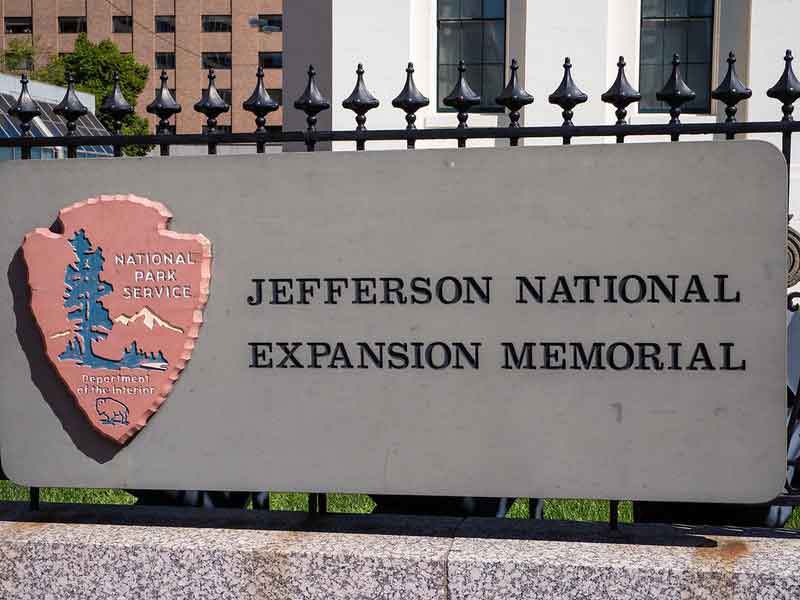Discovering the Wonders of the Jefferson National Expansion Memorial
The Jefferson National Expansion Memorial, also known as the Gateway Arch National Park, is a symbol of American ingenuity and determination. Located in St. Louis, Missouri, the park commemorates the role that the city played as the starting point for the westward expansion of the United States during the 19th century. This article delves into the rich history, architectural marvels, and recreational activities that await visitors at this iconic national park.
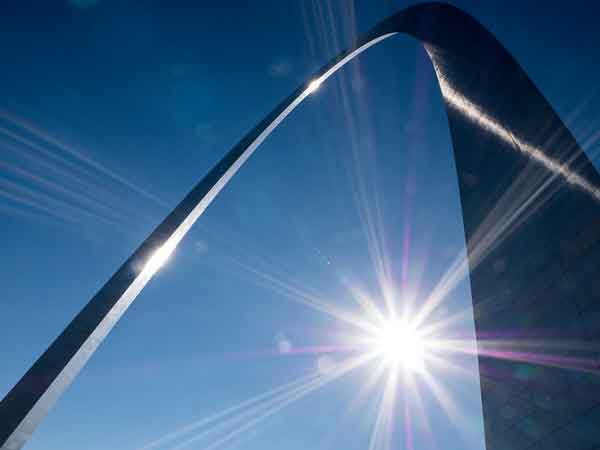
A Glimpse into the Past: The Historic Significance of the Jefferson National Expansion Memorial
The Louisiana Purchase and Westward Expansion
The Jefferson National Expansion Memorial commemorates a pivotal moment in American history – the Louisiana Purchase of 1803. This historic event, initiated by President Thomas Jefferson, involved the acquisition of over 828,000 square miles of territory from France, effectively doubling the size of the United States. The Louisiana Purchase opened up vast lands for exploration, settlement, and development, providing countless opportunities for Americans to expand westward.
The westward expansion was driven by a belief in Manifest Destiny, the idea that the United States was destined to stretch from the Atlantic to the Pacific Ocean. As settlers pushed westward, they encountered diverse landscapes, indigenous peoples, and a wide array of challenges. The Jefferson National Expansion Memorial honors the spirit of adventure, determination, and optimism that characterized this era in American history.
The Lewis and Clark Expedition: Pioneering the Western Frontier
One of the most famous westward expeditions was the Lewis and Clark Expedition. Meriwether Lewis and William Clark were tasked by President Jefferson to explore the newly acquired western territories, document their findings, and establish relationships with indigenous tribes. Their journey spanned over 8,000 miles, from St. Louis to the Pacific Ocean and back.
The Jefferson National Expansion Memorial pays tribute to the courage, resilience, and resourcefulness of Lewis and Clark, as well as the countless other pioneers who set out to explore and settle the vast western territories. These intrepid individuals laid the foundation for the growth and development of the United States.
The Old Courthouse: A Landmark of Civil Rights
The Old Courthouse, an integral part of the Gateway Arch National Park, holds a special place in American civil rights history. Constructed between 1839 and 1862, this historic building witnessed several landmark legal cases, including the infamous Dred Scott case.
Dred Scott was an enslaved African American man who sued for his freedom after living in free territories with his owner. The case, which began in the Old Courthouse in 1846, eventually reached the U.S. Supreme Court. In a controversial decision, the court ruled against Scott, stating that African Americans were not considered U.S. citizens and therefore had no legal standing to sue for their freedom.
The Dred Scott case highlighted the deep divisions in the nation over the issue of slavery and contributed to the growing tensions that ultimately led to the American Civil War. The Old Courthouse stands as a reminder of the struggle for civil rights in the United States.
Women’s Suffrage Movement: A New Chapter in the Fight for Equality
The Old Courthouse also played a role in the women’s suffrage movement, as it was the site of the historic trial of Virginia Louisa Minor in 1872. Minor was a suffragist who sued for the right to vote after being denied registration by a St. Louis election official. Although the case was ultimately unsuccessful, it marked an important milestone in the fight for women’s rights in the United States.
The Jefferson National Expansion Memorial’s emphasis on the historic significance of the Old Courthouse highlights the building’s role in shaping the nation’s civil rights history. Visitors to the park are encouraged to explore the Old Courthouse and learn about the pivotal events that took place within its walls.
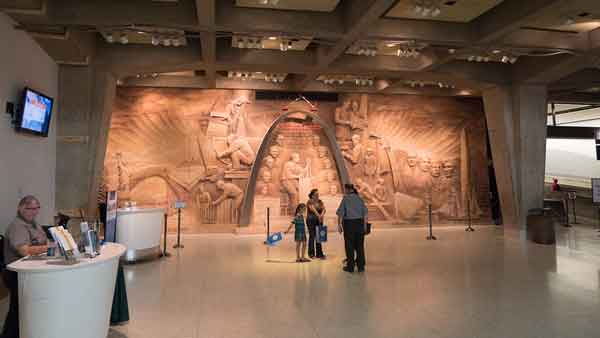
The Gateway Arch: A Soaring Symbol of American Progress
Eero Saarinen’s Visionary Design
The Gateway Arch, an architectural marvel designed by Finnish-American architect Eero Saarinen, is the centerpiece of the Jefferson National Expansion Memorial. Saarinen’s visionary design was chosen from among 147 entries in a national competition held in 1947 to select a fitting monument to celebrate westward expansion. With its elegant parabolic curve and gleaming stainless steel exterior, the Gateway Arch stands as a symbol of American progress and the limitless potential of the human spirit.
Measuring 630 feet in both height and width, the Gateway Arch is the tallest man-made monument in the Western Hemisphere and the world’s tallest arch. Its sleek, minimalist design embodies the concepts of innovation and modernism, while its enormous scale reflects the grandeur of the American West and the bold aspirations of the pioneers who ventured into these uncharted territories.
Engineering Feats and Construction Challenges
The construction of the Gateway Arch was a remarkable feat of engineering that took over two years to complete, from February 1963 to October 1965. Building the Arch presented numerous technical challenges, including the need to develop custom machinery and equipment to facilitate the assembly of the stainless steel sections. The construction process also required the implementation of unprecedented safety measures, as workers navigated extreme heights and tight spaces.
One of the most significant engineering innovations involved in constructing the Gateway Arch was the use of a “creeping” crane system. This innovative solution allowed the crane to inch its way up the Arch as each section was added, making it possible to lift the massive steel components into place. The final piece of the Arch, known as the “keystone,” was put into place with great precision, resulting in a stable and self-supporting structure.
The Gateway Arch Foundation and Landscape
The Gateway Arch is surrounded by beautifully landscaped grounds, designed by landscape architect Dan Kiley. The park’s green spaces feature tree-lined walkways, reflecting pools, and a variety of plantings that create a serene and inviting atmosphere. The design of the park grounds enhances the overall experience of visiting the Gateway Arch, inviting visitors to relax and enjoy the outdoors while taking in the breathtaking monument.
Additionally, the park grounds are home to the Gateway Arch Foundation, which oversees the preservation and enhancement of the monument and its surrounding park. Through a combination of public and private funding, the Foundation ensures that the Gateway Arch remains a vibrant symbol of American progress for generations to come.
Commemorative Elements: Honoring Pioneers and Visionaries
At the base of the Gateway Arch, visitors can find several commemorative elements that honor the pioneers, visionaries, and leaders who played a role in America’s westward expansion. Among these is the “Museum of Westward Expansion,” a series of engraved granite panels that depict scenes from the journey of Lewis and Clark, the development of the transcontinental railroad, and the settlement of the West. Additionally, a bronze plaque at the Arch’s entrance commemorates the Louisiana Purchase, acknowledging the far-reaching impact of this historic land acquisition on the nation’s growth.
In conclusion, the Gateway Arch is not only an architectural marvel but also a soaring symbol of American progress, embodying the spirit of innovation, determination, and optimism that drove the nation’s westward expansion. Its stunning design, remarkable engineering, and rich historical context make it a must-see destination for anyone visiting the Jefferson National Expansion Memorial.

The Museum at the Gateway Arch: A Journey through American History
The Museum at the Gateway Arch offers visitors an engaging and immersive experience that delves into the rich history of westward expansion in the United States. From the early days of St. Louis to the challenges faced by pioneers venturing west, the museum’s exhibits bring history to life through interactive displays, authentic artifacts, and compelling storytelling.
Exhibits Spanning Five Thematic Areas
The museum’s exhibits are organized into five thematic areas, each focusing on a different aspect of America’s journey west. These areas include:
-
Colonial St. Louis: This exhibit explores the early history of St. Louis, from its founding as a French fur trading post in 1764 to its growth as a bustling riverfront city. Visitors can learn about the diverse cultures and industries that shaped the city, including the influence of the Spanish, French, and Native American communities.
-
Jefferson’s Vision: This section of the museum delves into the ambitious vision of President Thomas Jefferson, who sought to expand the United States from coast to coast. Visitors can explore the significance of the Louisiana Purchase and the impact of Jefferson’s leadership on the nation’s growth.
-
The Riverfront Era: This exhibit transports visitors back to the bustling riverfront of 19th-century St. Louis, a hub of trade, commerce, and transportation. Through interactive displays and artifacts, visitors can experience the sights, sounds, and smells of the thriving riverfront and learn about the industries that fueled the city’s growth.
-
Manifest Destiny: Focusing on the concept of Manifest Destiny, this section of the museum explores the social, political, and economic factors that drove westward expansion. Visitors can learn about the various motivations of pioneers, the challenges they faced, and the impact of their journeys on the land and indigenous peoples.
-
New Frontiers: This exhibit looks at the lasting legacy of westward expansion, from the development of new technologies and transportation systems to the continued growth of the United States. Visitors can examine the ways in which westward expansion continues to shape the nation today, both culturally and economically.
Interactive Displays and Immersive Experiences
The Museum at the Gateway Arch features a range of interactive displays and immersive experiences that engage visitors and bring history to life. These include:
- Life-sized dioramas depicting scenes from the Lewis and Clark Expedition
- A replica of a keelboat used by early explorers on the Mississippi River
- Touch-screen exhibits that allow visitors to explore historical maps and documents
- A virtual reality experience that simulates a journey up the Gateway Arch
The Tucker Theater: A Cinematic Experience
Located within the museum, the Tucker Theater offers visitors a captivating documentary film that recounts the construction of the Gateway Arch. The film, “Monument to the Dream,” showcases the incredible feats of engineering, determination, and teamwork that brought Eero Saarinen’s vision to reality. The Tucker Theater provides a comfortable and immersive viewing experience, complete with surround sound and a large-format screen.
Educational Programs and Resources
The Museum at the Gateway Arch is dedicated to providing educational resources and programming to visitors of all ages. School groups can participate in guided tours and hands-on learning activities tailored to their grade level and curriculum. Additionally, the museum offers a variety of educational resources, including lesson plans, activity guides, and online materials, to help educators and students further explore the history of westward expansion.
In conclusion, the Museum at the Gateway Arch offers a comprehensive and engaging journey through American history, allowing visitors to explore the people, events, and ideas that shaped the nation’s westward expansion. Through its captivating exhibits, interactive displays, and immersive experiences, the museum provides a unique and enriching experience for all
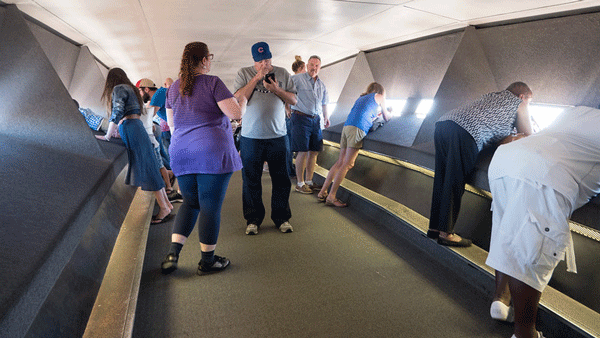
Exploring the Park: Recreational Activities and Attractions
The Gateway Arch National Park offers a wide range of recreational activities and attractions for visitors to enjoy, in addition to the iconic Gateway Arch and the Old Courthouse. With its expansive park grounds and scenic riverside location, the park provides numerous opportunities for outdoor activities, relaxation, and exploration. Here, we highlight some of the top recreational activities and attractions for visitors to the park.
Mississippi Riverboat Cruises: A Scenic Voyage through History
One of the most popular attractions at the park is the Mississippi Riverboat Cruise, which allows visitors to experience the river’s majestic beauty while learning about its historical significance. These cruises are operated by the Riverboats at the Gateway Arch, which feature two classic paddlewheel riverboats, the Tom Sawyer and the Becky Thatcher. The riverboats offer a variety of cruise options, including sightseeing tours, dinner cruises, and special event cruises, all while providing panoramic views of the St. Louis skyline and the Gateway Arch.
Kiener Plaza: A Picturesque Gathering Space
Kiener Plaza, located just west of the Gateway Arch, is a beautifully landscaped park that offers visitors a serene space to relax and enjoy the outdoors. The plaza features a large central lawn, tree-lined walkways, and a modern playground for children. The centerpiece of Kiener Plaza is the “The Runner” statue, an iconic bronze sculpture that captures the spirit of motion and progress. With its stunning views of the Gateway Arch, Kiener Plaza is a perfect spot for picnics, photos, and leisurely strolls.
Gateway Arch Park Trails: Discover Nature along the Mississippi River
The park features several miles of walking and biking trails that meander through its scenic landscape, offering picturesque views of the Mississippi River and the Gateway Arch. These trails provide a great opportunity for visitors to enjoy the park’s natural beauty, observe local wildlife, and experience the tranquility of the riverfront. The trails are well-maintained and accessible for all skill levels, making them a popular choice for families, casual walkers, and cycling enthusiasts.
Outdoor Events and Programs: Celebrate Community and Culture
Throughout the year, the Jefferson National Expansion Memorial hosts a variety of outdoor events and programs that cater to diverse interests and age groups. These events include outdoor concerts, cultural festivals, and community gatherings, all set against the backdrop of the Gateway Arch and the Mississippi River. By attending these events, visitors can enjoy the park’s vibrant atmosphere, experience local culture, and engage with the St. Louis community.
Ranger-led Programs: Connect with History and Nature
The National Park Service offers a range of ranger-led programs at the park, designed to enhance the visitor experience and foster a deeper connection with the park’s historical and natural features. These programs include guided tours of the Old Courthouse, talks on the history of westward expansion, and educational activities for children. Participating in these ranger-led programs is an excellent way to gain insights into the park’s significance and appreciate the beauty of its natural surroundings.
In conclusion, the Jefferson National Expansion Memorial offers a diverse array of recreational activities and attractions that cater to a wide range of interests and age groups. From scenic riverboat cruises and peaceful walking trails to engaging ranger-led programs and lively outdoor events, there is something for everyone to enjoy and discover at this iconic national park.

Visiting the Jefferson National Expansion Memorial: Practical Information
Planning a visit to the Jefferson National Expansion Memorial can be an exciting experience, offering an opportunity to explore the iconic Gateway Arch, the Museum at the Gateway Arch, and the park’s beautiful grounds. To ensure a smooth and enjoyable visit, it’s essential to be aware of some practical information, including directions, hours of operation, ticketing details, and other useful tips.
Directions and Parking
The Jefferson National Expansion Memorial (Gateway Arch National Park) is located in downtown St. Louis, Missouri, near the Mississippi River. Visitors can access the park by car, public transportation, or on foot.
By Car: If arriving by car, the park is easily accessible from major highways, including Interstates 44, 64, and 70. Parking is available at several nearby parking garages and surface lots, with a fee-based parking garage located directly beneath the park grounds.
Public Transportation: The park is well-served by public transportation, with the MetroLink light rail system offering two nearby stations: the 8th & Pine Station and the Laclede’s Landing Station. Bus services also provide convenient access to the park.
On Foot: For those staying in downtown St. Louis, the park is within walking distance of many hotels and attractions.
Hours of Operation
The Jefferson National Expansion Memorial is open year-round, with the Gateway Arch and the Old Courthouse operating on slightly different schedules.
Gateway Arch: The Gateway Arch is open daily, except on Thanksgiving Day, Christmas Day, and New Year’s Day. Hours of operation vary by season, with extended hours during the summer months.
Old Courthouse: The Old Courthouse is open daily, with the exception of some federal holidays. Hours of operation are typically from 8:00 am to 4:30 pm, but it’s recommended to check the National Park Service website for the latest information.
Ticketing and Reservations
To visit the Gateway Arch, visitors must purchase tickets for the Tram Ride to the Top and the Museum at the Gateway Arch. Tickets can be purchased online in advance or at the Gateway Arch Ticketing and Visitor Center located in the Old Courthouse. Advance reservations are highly recommended, especially during peak seasons and weekends, as tickets can sell out quickly.
Riverboat cruises also require advance ticket purchases, which can be done online or at the ticketing center.
Admission to the Old Courthouse and the park grounds is free of charge.
Accessibility
The Jefferson National Expansion Memorial is committed to accommodating visitors with disabilities. Accessible parking spaces, ramps, and elevators are available throughout the park, and the Tram Ride to the Top features accessible tram capsules. Service animals are welcome in all park facilities. For more information on accessibility, visit the National Park Service website.
Food and Beverage Options
Food and beverages are available for purchase at the Arch Café, located in the Visitor Center below the Gateway Arch. The café offers a variety of sandwiches, salads, snacks and drinks. Picnic areas are also available throughout the park grounds for those who prefer to bring their own food.
In conclusion, visiting the Jefferson National Expansion Memorial requires some planning and preparation to ensure a smooth and enjoyable experience. By being aware of practical information such as directions, hours of operation, ticketing details, and accessibility options, visitors can focus on experiencing the rich history and beauty of this iconic national park.
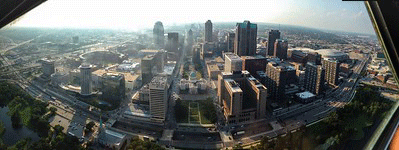
Gateway Arch National Park FAQ’s
Q: What is the best time to visit the Jefferson National Expansion Memorial?
A: While the park is open year-round, the best time to visit depends on your preferences. Spring and fall offer pleasant weather and smaller crowds, while summer provides longer operating hours and a variety of outdoor events. Winter can be colder but is a great option if you prefer to avoid crowds.
Q: Can I purchase tickets for the Gateway Arch on the day of my visit?
A: While same-day tickets are sometimes available at the Gateway Arch Ticketing and Visitor Center located in the Old Courthouse, it’s highly recommended to purchase tickets online in advance, especially during peak seasons and weekends, as they can sell out quickly.
Q: Are there guided tours available at the Jefferson National Expansion Memorial?
A: Yes, the National Park Service offers ranger-led programs that include guided tours of the Old Courthouse, talks on the history of westward expansion, and educational activities for children. For more information on available programs, visit the National Park Service website.
Q: Is photography allowed at the Jefferson National Expansion Memorial?
A: Photography is allowed and encouraged throughout the park, with the exception of some specific areas inside the museum where photography might be restricted to protect delicate artifacts. Be sure to capture stunning images of the Gateway Arch, the Old Courthouse, and the scenic park grounds.
Q: How long does it take to visit the Jefferson National Expansion Memorial?
A: The time required to visit the park can vary depending on your interests and the attractions you choose to experience. Generally, visitors should allocate at least 2-4 hours to explore the Gateway Arch, the Museum at the Gateway Arch, and the Old Courthouse. Additional time may be needed for recreational activities, park trails, and riverboat cruises.
Q: Is the Jefferson National Expansion Memorial suitable for children?
A: Yes, the park offers a variety of attractions and activities that cater to children of all ages, including the Museum at the Gateway Arch, the playground at Kiener Plaza, and educational ranger-led programs. The park’s trails and open spaces also provide opportunities for families to enjoy outdoor activities together.
Q: Are pets allowed at the Jefferson National Expansion Memorial?
A: Pets are allowed on the park grounds but must be kept on a leash no longer than six feet at all times. However, pets are not allowed inside the Gateway Arch, the Old Courthouse, or on the riverboats. Service animals are welcome in all park facilities.
Q: Is there a place to store my belongings while visiting the Jefferson National Expansion Memorial?
A: Yes, there are lockers available for rent at the Gateway Arch Ticketing and Visitor Center, located in the Old Courthouse. These lockers can be used to store personal belongings and bags while you explore the park. Please note that large bags and backpacks are not allowed on the Tram Ride to the Top, so utilizing lockers is recommended for visitors with larger items.

